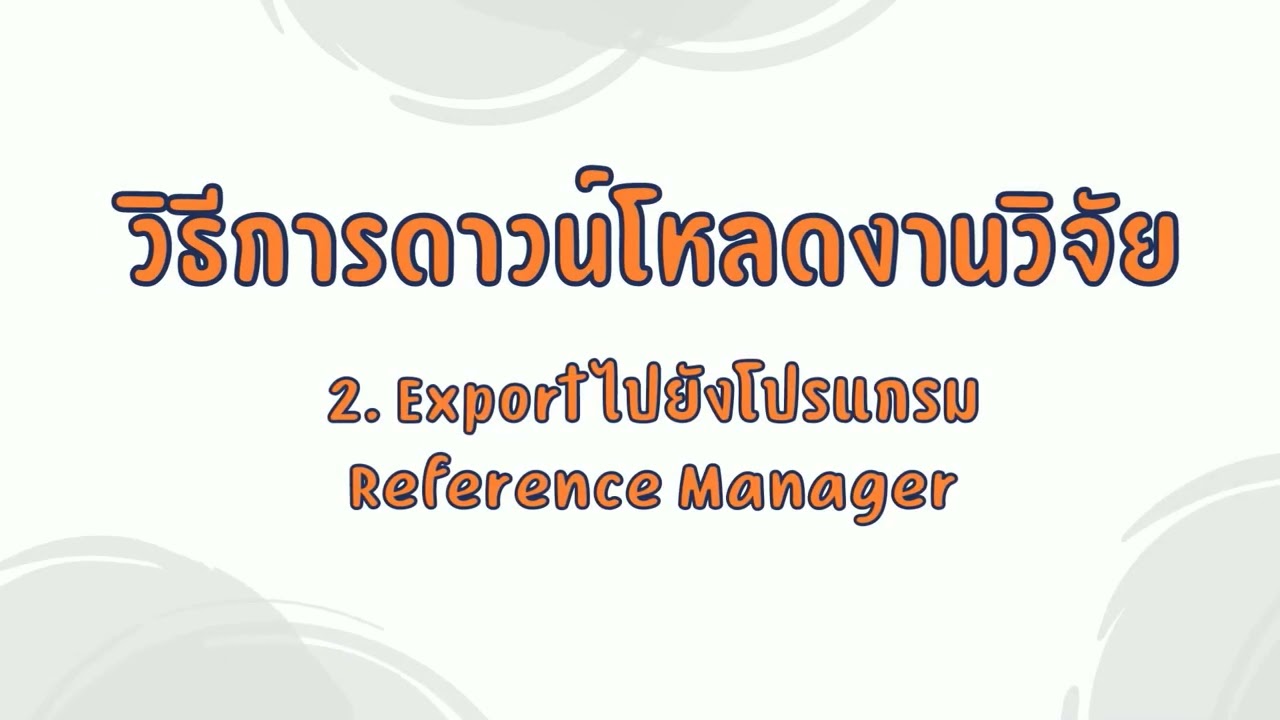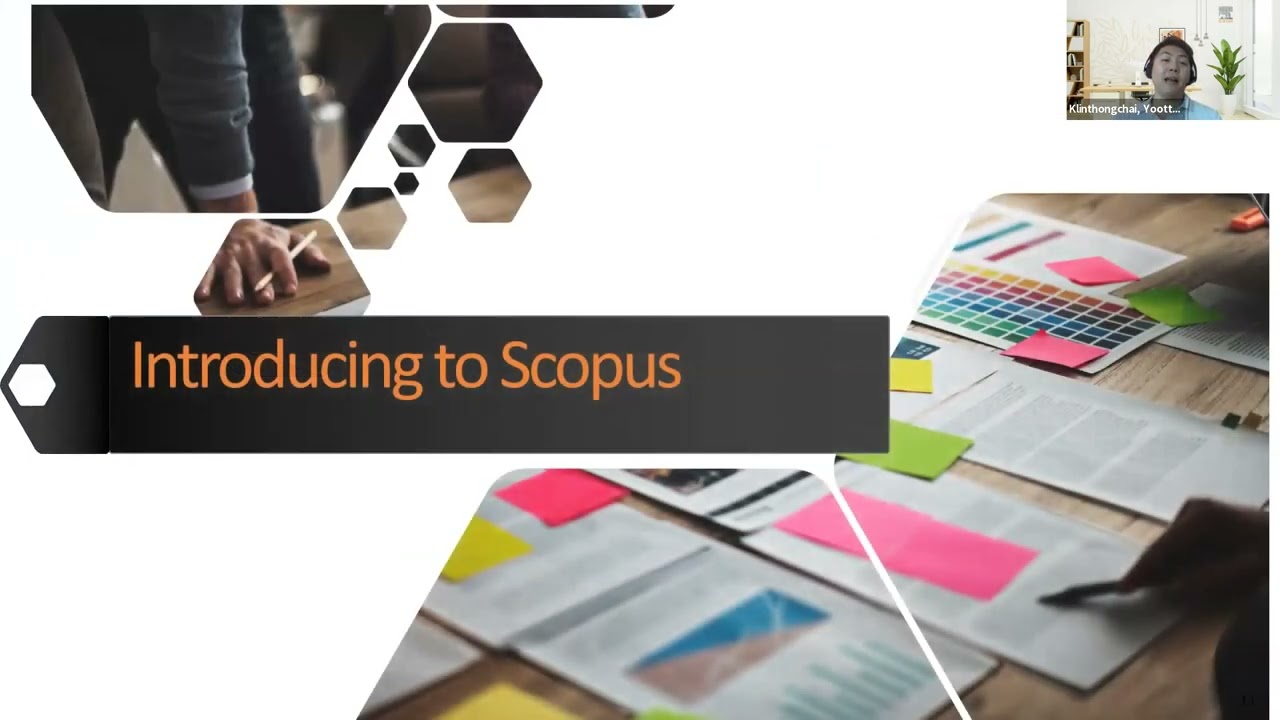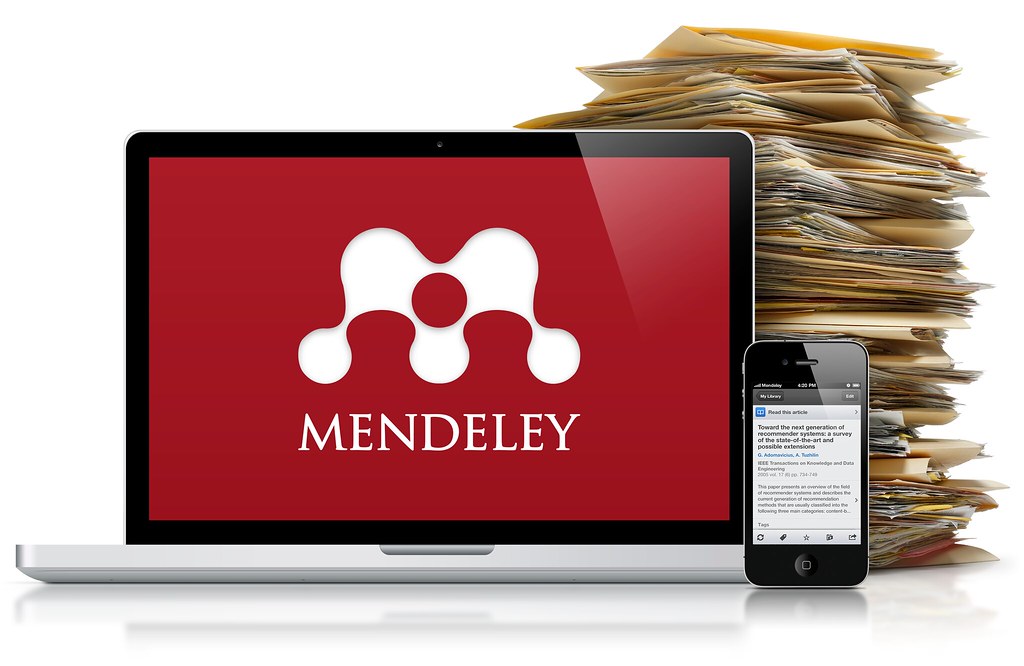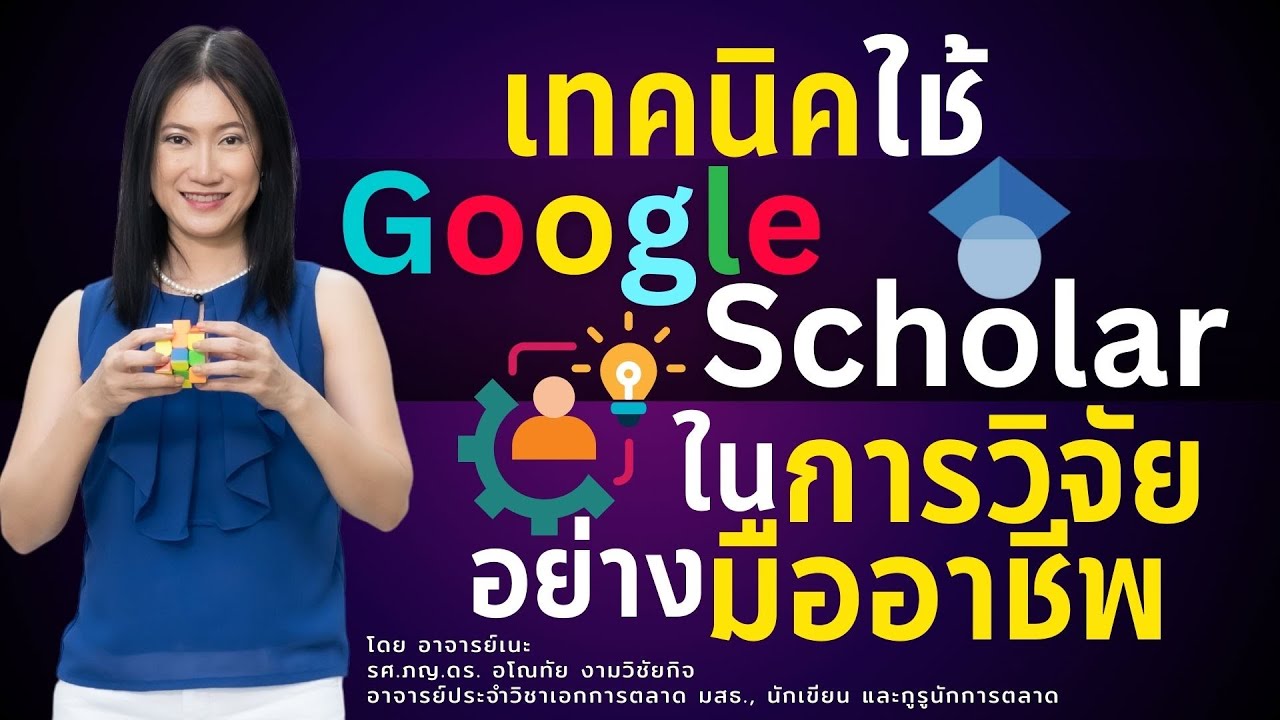Step 2:
Literature Review

Book List
| ผู้แต่ง | ไพจิตรา ล้อสกุลทอง |
| พิมพลักษณ์ | 2557 |
| หัวเรื่อง | |
| ผู้แต่งร่วม | กิตติภูมิ ภิญโญ |
| เลขมาตรฐานสากลประจำวารสาร | 2229-192X |
| แหล่งที่ | วารสารยุพรัตน์ 4, 2 ( เม.ย - มิ.ย. 2557) 79-91 |
| ผู้แต่ง | ชัยเสรฎฐ์ พรหมศรี |
| พิมพลักษณ์ | 2557 |
| หัวเรื่อง | |
| เลขมาตรฐานสากลประจำวารสาร | 0125-4960 |
| แหล่งที่ | วารสารนักบริหาร 34, 1 (ม.ค.-มิ.ย. 2557) 11-22 |
| หมายเหตุทั่วไป | บทคัดย่อภาษาอังกฤษ |
| Author | ศิลปพร ศรีจั่นเพชร |
| Published | กรุงเทพฯ : คณะพาณิชยศาสตร์และการบัญชี มหาวิทยาลัยธรรมศาสตร์, 2563 |
| Edition | พิมพ์ครั้งที่ 1 |
| Detail | 1 เล่ม (หน้าไม่เรียงลำดับ) : ภาพประกอบ |
| Subject | การบัญชี การบัญชี --วิจัย[+] Humanities and Social Sciences Branch |
| Added Author | ไพลิน ตรงเมธีรัตน์ |
| ISBN | 9786165656221 |
| ประเภทแหล่งที่มา |
Ebook list
Year: 2020
Provider: Springer Nature
- Foundations of Socio-Environmental Research
- Handbook of Research on Entrepreneurship and Organizational Resilience During Unprecedented Times
- Handbook of Research on Evolving Designs and Innovation in ICT and Intelligent Systems for Real-World Applications
- Handbook of Research on Innovative Approaches to Information Technology in Library and Information Science
- Handbook of Research on Promoting an Inclusive Organizational Culture for Entrepreneurial Sustainability
- Handbook of Research on Sustainable Tourism and Hotel Operations in Global Hypercompetition
- Higher Education: Handbook of Theory and Research
- Information resource description: creating and managing metadata, Second edition
- Introduction to Nursing Research: Incorporating Evidence-Based Practice
- Language Research in Multilingual Settings
- Literacy in a Digital World
- Music Therapy Assessment : Theory, Research, and Application
- Nursing Concept Analysis : Applications to Research and Practice
- Qualitative Research With Diverse and Underserved Communities
- Research Methods in English Medium Instruction
- Research Methods in International Business
- Research Methods in Language Attitudes
- Rethinking Media Research for Changing Societies
- Second Language Task-Based Performance: Theory, Research, Assessment
- Using Arts-based Research Methods
Full Text Article
Without a literature review, there can be no research project. Literature reviews are necessary
to learn what is known (and not known) about a topic of interest. In the respiratory care profes-
sion, the body of research is enormous, so a method to search the medical literature efficiently is
needed. Selecting the correct databases, use of Boolean logic operators, and consultations with
librarians are used to optimize searches. For a narrow and precise search, use PubMed,
MEDLINE, Ovid, EBSCO, the Cochrane Library, or Google Scholar. Reference management
tools assist with organizing the evidence found from the search. Analyzing the search results and
writing the review provides an understanding of why the research question is important and its
meaning. Spending time in reviewing published literature reviews can serve as a guide or model
for understanding the components and style of a well-written literature review. Key words:
research; literature review; biomedical research; database; PubMed; MEDLINE; search engine; evi-
dence; index medicus; journals; literature synthesis; bibliographies; medical literature review. [Respir
Care 2023;68(11):1576–1584. © 2023 Daedalus Enterprises]
A literature review chronicles conceptual and empirical achievements within a re-
search stream. An excellent literature review accomplishes much more. Excellent
literature reviews not only explain advances within a research stream (“summarize
and synthesize”) but also provide a conceptual framework that captures the key ele-
ments of the research (“conceptualize”) and lay a foundation for future inquiry that
can accelerate progress in advancing knowledge (“energize”). We accomplish two
main tasks in this editorial. First, we offer details about what constitutes an excellent
literature review. Second, we summarize the four literature reviews contained in this
special topic forum and explain their excellent features.
Despite the advantages of literature review and the abundance of texts
that discuss it, there is still a gap in critical reflection on its methodologies
and uses. My goal in this editorial is to reflect on the practice of literature
review in the administration field from a critical perspective. The literature
review I am referring to is not just a set of techniques for conducting it;
it is a collective doing among scholars, producing specific knowledge. By
drawing on concepts such as fad, methodologism, and decolonial critique,
we can conclude that contrary to the common belief among researchers,
following rigid protocols in literature review does not necessarily lead to
new knowledge. Instead, it reproduces pre-existing ways of thinking about
a topic, which can inhibit reflective and critical thinking about research
findings.
This paper discusses the question about how to write a literature review paper (LRP).
It stresses the primary importance of adding value, rather than only providing an overview, and it
then discusses some of the reasons for (or not) actually writing an LRP, including issues relating to
the nature and scope of the paper. It also presents different types of LRPs, advises on reporting the
methodology used for the selection of papers for review, and the structure of an LRP. An important
conclusion is that the heterogeneity in LRPs is very large. This paper also presents some of the aspects
that the authors feel are important structural and contextual considerations that help produce high-
quality review papers.
For researchers unaccustomed to using grounded theory methodology (GTM), it can be
daunting. To help address this issue, in this article we present a dialogue between a doctoral
candidate who is using GTM and an academic who has experience working with this methodology.
Through dialogue, we tackle several important points relating to the methodology, focusing on two
key aspects which often create challenges for researchers new to GTM: 1. how and when to
engage with existing literature, and 2. what significant implications which using this methodology
has for the overall written structure of a grounded theory study, not simply the presentation of the
grounded theory itself. This format, which ends with a reflection on the dialogue, aims to facilitate a
clearer understanding of the methodology, clarify problematic issues, and offer practical guidance
on how to apply it, thereby shedding light on "the long, rocky walk through the dark forest of the
research process using the GT methods" (WU & BEAUNAE, 2014, p.249).
- การทบทวนวรรณกรรมอย่างเป็นระบบ: วิธีการปฏิบัติทีละขั้นตอน
- ความสำคัญของการทบทวนวรรณกรรมสำหรับการวิจัย
- การทบทวนวรรณกรรมสำหรับการวิจัยเชิงคุณภาพ
- การทบทวนวรรณกรรมในงานวิจัยทางสังคมศาสตร์
- การทบทวนวรรณกรรมสำหรับการวิจัย
- “จงทำ” และ “จงอย่าทำ” ในการทบทวนวรรณกรรม
- กลยุทธ์การทบทวนวรรณกรรมอย่างสร้างสรรค์สำหรับนักวิจัยมือใหม่
- How to Conduct a Systematic Review and Meta-Analysis: A Guide for Clinicians
- Doing a Literature Review
- Conducting a literature review
- How to do (or not to do) a critical literature review
- Writing a literature review
- How to Write a Literature Review Paper?
- Ten Simple Rules for Writing a Literature Review
Prompts
I am a [field] researcher working on [specific research area/specialty]. Analyze and summarize the latest developments in [specific technology/method/approach] for [specific application/problem] from the past [timeframe]. The analysis should be suitable for both [primary audience] and [secondary audience] who may [intended use of the information]. Use [desired language style] but include [practical/theoretical implications]. Focus on [specific context or conditions relevant to your field].
Organize the analysis as follows:
1. Current [methodological/technological/theoretical] approaches
2. Key findings and [relevant metrics/outcomes]
3. Implementation challenges
4. Research gaps
5. Future research directions
I am a computer science researcher working on machine learning applications in agriculture. Analyze and summarize the latest developments in computer vision applications for crop disease detection from the past 3 years. The analysis should be suitable for both technical researchers and agricultural extension officers who may implement these technologies. Use clear technical language but include practical implications. Focus on solutions applicable to tropical agriculture conditions.
Organize the analysis as follows:
1. Current technological approaches
2. Key findings and success rates
3. Implementation challenges
4. Research gaps
5. Future research directions
I am a clinical researcher working on immunology interventions in pediatric care. Analyze and summarize the latest developments in immunotherapy approaches for childhood allergies from the past 2 years. The analysis should be suitable for both immunology researchers and practicing pediatricians who may implement these treatments. Use precise medical terminology but include practical clinical applications. Focus on solutions applicable to outpatient settings
I am an environmental scientist working on urban pollution mitigation. Analyze and summarize the latest developments in air quality monitoring technologies for urban environments from the past 5 years. The analysis should be suitable for both environmental researchers and city planners who may implement these systems. Use scientific terminology but include practical urban planning implications. Focus on solutions applicable to high-density metropolitan areas.
"ฉันกำลังทำ การทบทวนวรรณกรรม เกี่ยวกับ แนวทางการประเมินผลโครงการบริการวิชาการของมหาวิทยาลัย
กรุณาให้ข้อมูลเกี่ยวกับ:
1.แนวโน้มล่าสุดและงานวิจัยสำคัญในหัวข้อนี้
2.กรอบแนวคิดที่ใช้ในการประเมินผลกระทบของโครงการบริการวิชาการ
3.ความท้าทายในการสืบค้นและสังเคราะห์วรรณกรรม
4.แนวทางปฏิบัติที่ดีที่สุดในการทำ Literature Review
คำตอบควรเป็น เชิงวิชาการและมีโครงสร้างชัดเจน"
User Guide
User Guide
- PRISMA Literature Review (Flow Chart & Example) 📖🔍
- Doing a literature review : releasing the social science research imagination
- How to do a systematic literature review in nursing a step-by-step guide
- Doing your literature review : traditional and systematic techniques
- การสังเคราะห์งานวิจัย : การทบทวนวรรณกรรมแบบบูรณาการ Integrative literature reviews.
- Essentials of business resarch methods /
- Experimental and quasi-experimental designs for research
รายละเอียด
1. เพื่อทราบทฤษฎีและเทคนิคการสืบค้นเบื้องต้น
2. เพื่อสามารถสืบค้นจาก WebOPAC & One Search ได้อย่างมีประสิทธิภาพ
3. เพื่อได้เรียนรู้และใช้ประโยชน์จากฟังค์ชั่นของ WebOPAC & One Search จากผลการสืบค้นที่ได้ (การหาหนังสือบนชั้น,การยืมระหว่างห้องสมุด,การยืมระหว่างคณะ/หน่วยงานภายในมข.)
4. เพื่อนำผลการสืบค้นที่ได้ไปจัดทำรายการอ้างอิงในผลงานวิชาการ
1. การสืบค้น WebOPAC
- แนะนำวิธีการ/เทคนิคการสืบค้น
- ผลการสืบค้น : การอ่านรายละเอียด การกรองผลการสืบค้น
- การ download ข้อมูล
- การหาหนังสือบนชั้น
- ระบบสมาชิกห้องสมุดผ่าน WebOPAC : รายการยืม การจอง การยืมต่อ ค่าปรับ
2. การสืบค้น One Search
- แนะนำวิธีการ/เทคนิคการสืบค้น
- ผลการสืบค้น : การอ่านรายละเอียด การกรองผลการสืบค้น
- การ download ข้อมูล
- การยืมระหว่างห้องสมุด (ILL)
- การยืมระหว่างคณะ/หน่วยงานภายใน มข. Campus Delivery Service (CDS)
3. แนะนำการนำรายการใน WebOPAC & One Search เพื่อใช้ในการอ้างอิง
4. ตอบปัญหาและข้อเสนอแนะ / ทำแบบประเมิน
เครื่องมือ Gen AI เพื่อสนับสนุนการวิจัยเบื้องต้น
- แนะนำเครื่องมือ Gen AI เกี่ยวการทำวิจัยเบื้องต้น
- วิธีการค้นหาข้อมูล โดยใช้ Gen AI
- การใช้คำสั่ง (Prompt)
Contact us >>








